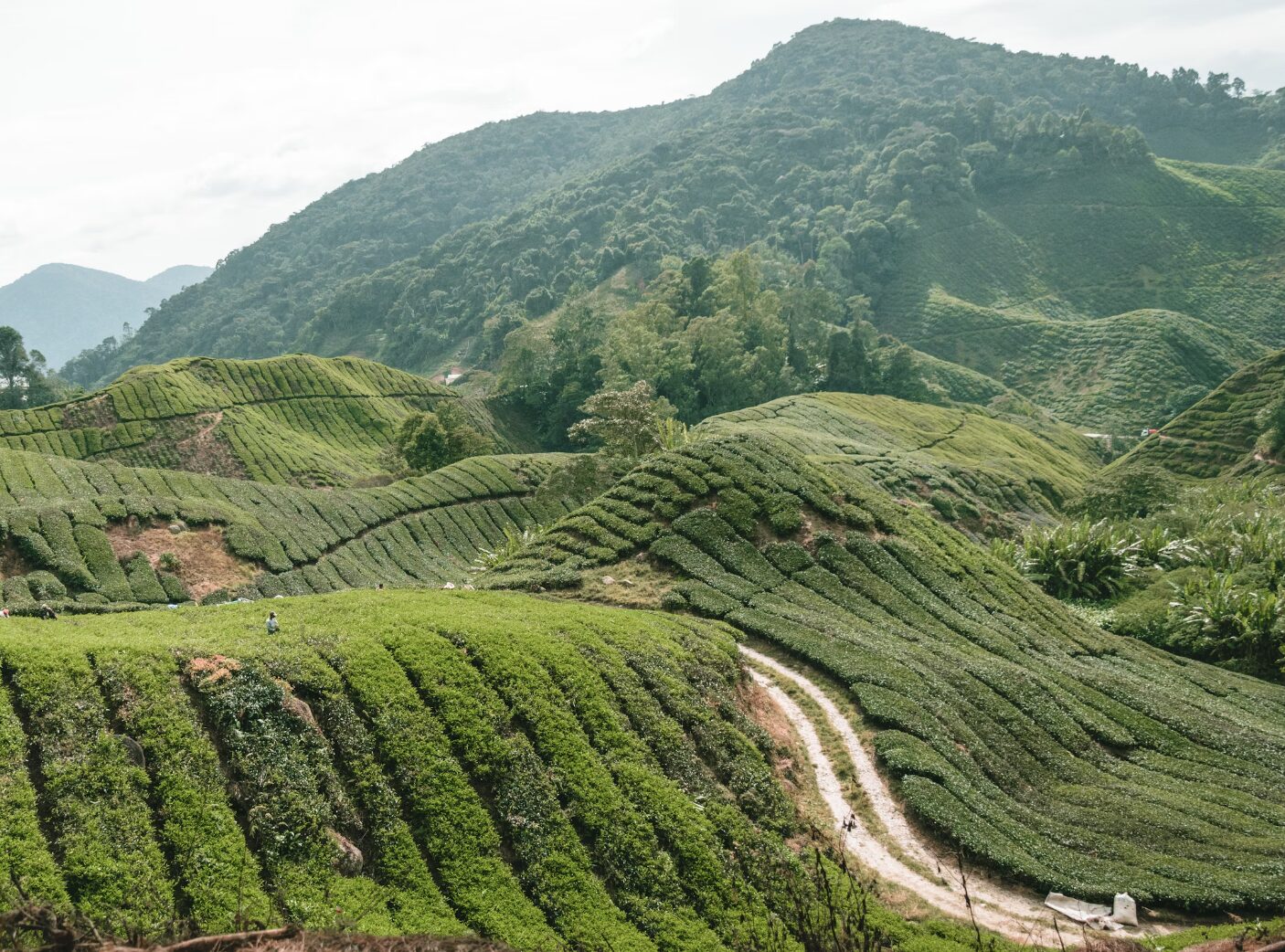The Implications of Transboundary Climate Risks for India

Summary
This brief examines an important, emerging subject for India that warrants urgent research and policy attention: transboundary climate risks.
Transboundary climate risks (TCRs) arise when the impacts of climate change in one country or jurisdiction generate a threat to the economy, society or ecosystems of another. They also manifest when mitigation or adaptation actions in one place generate adverse effects in another.
This discussion brief examines India’s current and future exposure to transboundary and cascading climate risks. It aims to synthesize the state of knowledge, using the relatively new and limited but growing evidence base for what has been termed “next generation” climate risks. It draws on new data analysis conducted specifically for the brief, a rapid literature review, interviews with key stakeholders, and a science-policy dialogue that brought together policymakers, experts and practitioners from across the country to discuss the subject. Held in Delhi in 2023, the dialogue also explored the implications and opportunities for India from establishing a regional institutional mechanism to strengthen cooperation on adaptation across the span of the Hindu Kush Himalaya.
The brief concludes with four recommendations to help India examine the transboundary climate risks it faces and to make the country more resilient to these and other climate risks. The authors argue that there is an urgent need for research to examine the potential threats to India’s economy, investments and people – and to better understand the socio-economic implications at all levels, from the micro scale (effects on the most vulnerable households) to the macro scale (threats to India’s economic growth aspirations). The authors argue that stronger adaptation planning is essential to build the resilience of communities in India to present and future risks.
This article is an abridged version of the original text, which can be downloaded from the right-hand column. Please access the original text for more detail, research purposes, full references, or to quote text.
Methodology
To better understand the transboundary climate risks that India faces today and could face under future warming scenarios we analysed data and risk levels for four indicators for which data were available. The indicators and their relative risks – assessed using the 2018 Transnational Climate Impacts Index – are as follows:
- Human mobility: the risks posed by climate change impacts in neighbouring countries and beyond that are likely to affect migration from changing migration and displacement flows to and from India.
- Risk level: high.
- Transnational Climate Impacts Index score: 9 out of 10.
- Remittances: the risks posed by climate change impacts in neighbouring countries and beyond that are likely to reduce remittance flows to India.3
- Risk level: relatively high.
- Transnational Climate Impacts Index score: 7 out of 10.
- Foreign direct investment (FDI): the risks posed by climate change impacts in neighbouring countries and beyond that undermine the value of FDI (inflows and outflows) for India.
- Risk level: high.
- Transnational Climate Impacts Index score: 8 out of 10.
- Trade: the risks posed by climate change impacts in neighbouring countries and beyond that threaten India’s imports of food and commodities, including major food crops, iron and steel, and non-ferrous metals.
- Risk levels: very low to very high.
- Transnational Climate Impacts Index scores: 1 out of 10 for imported cereals (because of India’s very low dependence on imports of cereals), but 10 out of 10 on embedded water risk (because of India’s very high dependence on key commodities grown in highly water-stressed areas of the world).
The projected climate change impacts we study for the first three indicators (human mobility, remittances and FDI flows), as well for trade in non-ferrous metals, iron and steel, and sugar, are those that are likely to arise from extreme climate events: such as heatwaves, floods and droughts. For trade in the major food crops (wheat, soy, rice and maize), we assess the projected impacts of slow onset warming on the production of these crops. (See Annex 1 for a granular description of the methodology.)
Key findings
Transboundary climate risks to human mobility
The data indicate that India could face a transboundary climate risk from rising numbers of in-migrants from future hot events in Yemen, and reduced numbers of emigrants leaving the country (as compared to the past) given future wet events in Europe (Austria and the UK) and dry events in Australia. Of course, Indian emigrants in these locations could also face direct climate risks from these extreme events.
Please refer to pages 2-4 for more details.
Transboundary climate risks to remittance flows
India’s remittance inflows exceeded its outflows in the sample year (2021). Most remittance inflows are from the countries in the Middle East, while remittance outflows are more diverse – three countries are within the Hindu Kush Himalaya and South Asia regions and one is remote (in North America). In the case of extreme events in countries with which India has a high level of interdependence (such as the United Arab Emirates and Oman), India could see a decrease in remittance inflows that may constitute a transboundary climate risk to its economy. This may be further exacerbated by the economic costs of climate change domestically (as India experiences a rise in dry events, for example, that increase its dependence on remittances from abroad). India may also see an increased demand for remittances to Sri Lanka (in the case of dry events).
Please refer to pages 4-6 for more details.
Transboundary climate risks to foreign direct investments
Total FDI inflows exceeded outflows during the sample period. Foreign direct investments to and from India are reciprocated between two partners: the US and Singapore, even though FDI inflows from the US quite substantially exceed India’s outflows to the country. Of India’s partners for FDI inflows, the UK and Germany face projected increases in wet events. India should consider the consequences of this on the stability of investments both in and from these countries. India’s return on investments may also be at risk in Mauritius from concurrent or sequential hot and dry events, in the United Arab Emirates from hot events, and in the Netherlands from wet events.
Please refer to pages 6-7 for more details.
Transboundary climate risks to trade
The data shows that India could face challenges to its supply of wheat from negative impacts on yields from increasing slow onset warming in Australia. In turn, demand for India’s rice, wheat and maize exports could increase if Nepal faces negative impacts on its domestic production of those crops. The role that climate change may play in the stability of India’s exports (from the impacts of extreme events on exports of non-ferrous metals, iron and steel; and from the impacts of slow onset changes on staple crops) is less clear. Demand could diminish if importers are forced to divert resources to cope with escalating impacts, but demand could rise if domestic production in importer countries is curtailed. Whether these dynamics represent risks to and/or opportunities for India’s trade, commerce and industry merits further research. However, India’s imports of non-ferrous metals from Switzerland and the United Arab Emirates may be less stable in the future from an increase in wet events and hot events respectively.
Please refer to pages 7-9 for more details.
Recommendations
In October 2023, a science-policy dialogue in Delhi brought together policymakers, experts and practitioners from across India to discuss the country’s exposure to transboundary and cascading climate risks. The dialogue also explored the implications and opportunities for India if it were to establish a regional institutional mechanism – spanning the Hindu Kush Himalaya – to strengthen cooperation on adaptation to manage them.
The following four recommendations are based on the content of the dialogue and inputs from stakeholder interviews. The recommendations also draw on actions in bilateral river water agreements, the Prime Minister’s Ten Point Agenda for Disaster Risk Reduction, existing fora for regional cooperation (such as SAARC and BIMSTEC), and three international agreements (the Sustainable Development Goals, Sendai Framework for Disaster Risk Reduction and Paris Agreement).
- Initiate and advance research and information sharing on transboundary climate risks.
- Boost both governance capacity and policy support within India and with other key countries.
- Promote and leverage climate negotiations and coalition building.
- Strengthen capacities and increase finance to build resilience.
See pages 10-11 to explore these recommendations in more detail.
Suggested Citation
Chopde, S., Hedlund, J., Crouse, C., Harris, K., (2024). The Implications of Transboundary Climate Risks for India. Adaptation Without Borders Discussion Brief 4. Stockholm Environment Institute





Comments
There is no contentYou must be logged in to reply.